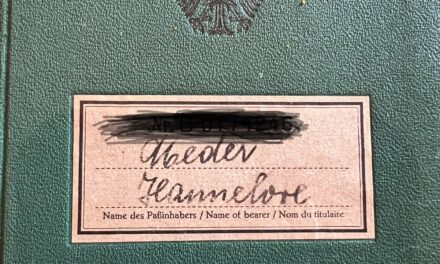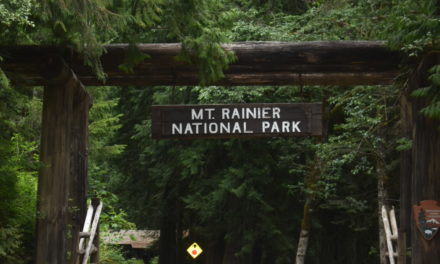As our constantly-at-home routines are morphing securely into sweat pants and snacks, my husband and I have come to enjoy mozzarella sticks probably more than we should – definitely more regularly than we should. On one snacking occasion, we craved that sweet and sometimes tangy companion to the fried sticks of warm cheese: raspberry sauce, more colloquially known as Melba Sauce.
I tried to find some at my local grocery stores and failed. Then I started to wonder how this pairing came to be. Was it not actually common, which would explain why I couldn’t find it? Who came up with the idea to pair two such delicious things in the first place?
As all good reporters do, I started Googling.
First, we must address the origin of the name “melba.” The sauce was apparently named for a famous opera singer, Dame Nellie Melba, in London, after the famous Savoy Hotel chef Auguste Escoffier created it specifically for her. The word is used to refer to any sauce of this nature, in any flavor, but typically peach. As we will learn later, when this deliciousness was first married with mozzarella sticks, however, it was NOT called Melba.
So, where did this pairing originate? And why does it only appear on menus in the 518? The best explanation I found was in Atlas Obscura, “a global community of explorers, who have together created a comprehensive database of the world’s most wondrous places and foods.” They purport that the combination originated in Albany, NY, and the Capital Region is really the only place you can find the Melba-mozzarella stick combo.
Armed with this info, the next step was to find out who started offering the two items together. If only it was that easy.
I started by going to the two people I believe know Albany better than anyone: Matt Malette and Maeve McEneny Johnson.
Matt is known for his Albany Archive segments on Spectrum News, and runs a Twitter page by the same name. He is a knower of many things obscure, but most involve Albany history and lore. He’s also president of the Historic Albany Foundation.
Maeve and I go waaaay back. All the way to grammar school. Her father is former Albany Assemblyman Jack McEneny, who served until 2012 and is also a well-known local historian. Maeve is the Education & Heritage Coordinator at Discover Albany. She has held a few different roles in Albany throughout her career, including a tour guide for the City of Albany for over a decade and a tour guide at the State Capitol.
I figured if anyone knew the answer to the Melba mystery, it would be one of these two – or maybe both of them. But they didn’t.
So, back to Google I went, but this time two geek historians who were just as interested as I was had by back.
The Atlas Obscura article links to a post by Times Union Table Hopping Blogger Steve Barnes from June of 2012. He basically posed the Melba-mozzarella origin question to readers, professing not to know the answer himself. I read all 79 comments. Most people claimed to have started seeing the item on menus beginning nearly 40 years ago or so. And most agreed that they first saw it, tasted it, and loved it, at HP Mulligans, which used to be at 112 Wolf Rd., Colonie, where Hannoush Jewelers now stands.
I shared this info with Matt and Maeve, who had begun reading the comments as well, and they had come to the same conclusion. We had to find the owners of HP Mulligans. They would have the next clue.
But because we’re now talking about the early 80s, nothing was on the Internet, so finding the owners was going to be tricky. Googling “HP Mulligans” only brought up Barnes’ article. I did find an article from a few years ago in a local business paper that mentioned that LeGrande Serras, former owner of the Reel Seafood Company, also formerly on Wolf Rd., used to own the Lexington Grill, which was at the same location as HP Mulligans. Maybe he knew something? So, I called him.
LeGrande confirmed that he did buy HP Mulligans and kept the name for two years before changing it to Lexington Grill. He also said that he did keep Melba sauce and mozzarella sticks on the Lexington menu, which would explain some of the comments on Barnes’ blog post. He also told me several others had reached out to him recently about this very topic, but apparently those folks had the trail go cold.
When I asked LeGrande about the previous owner, he laughed, but very quickly shared the name and most recent number he had to help get me in touch. The man in question is Bill Pompa, current owner of the most amazing tots in town, I mean, Mr. Subb.
Pompa originally owned a franchise of Neba Mike’s in Troy (which needs no hyperlink to denote its awesomeness). But at the time, he wasn’t able to expand his Neba locations outside of Rensselaer County and Watervliet due to agreements with the owners. He said he got bored and was looking for something else, which is how HP Mulligans was born.
But when I asked about the raspberry sauce, Pompa dropped a bomb: he had a partner. My heart fell. I thought I had gotten to the center of the mystery, but all I had was another clue.
Pompa and his partner, Warren Miller, knew each other from working at an old shop called Walt’s Submarines (which became Big Dom’s subs) after high school. When Miller went away to college, Pompa started going into business. They reconnected a few years later and decided to go into business together, purchasing the Wolf Road building that became HP Mulligans.
It was Miller who created the menu for the restaurant and ended up developing the recipes for many of the items offered there, Pompa said. OK, fine, at least it was another clue.
But Pompa wasn’t sure if he had a way for me to get in touch with Miller. They more or less lost touch after HP Mulligans was sold to LeGrande. But he promised to go home and look to see what he had and would email me if his search was fruitful.
A little before 7 o’clock that night, I got an email from Pompa. I think I dropped my kid, or screamed, I’m not sure. I’m also not so sure why this was all so invigorating.
Basically, Pompa found a number for his old partner, called him and the two ended up reminiscing for a while. Miller agreed to talk to me, and you can bet that the second my child went down for nap the next day, I was on the phone.
Miller attended SUNY Delhi for Hotel Restaurant Management. In 1975, he traveled down to Virginia and got a job with the Marriott chain. He quickly learned that he did not like the corporate life but he did love the restaurant business.
So, he left the Marriott and started working for a place called, Fantastic Fritzbe’s Flying Food Factory. Say that five times fast. The chain doesn’t exist anymore, but was started by Great American Restaurants, which is still in business today. Fritzbe’s had four locations within northern Virginia and Maryland, Annandale, Restin, Fairfax, and Rockville, MD.
The Annandale location is where the “battered mozzarella” item had its start. Note: it was not called mozzarella sticks. This is also where Corporate Chef Chris Osborne came up with the raspberry sauce pairing.
Miller told me he wasn’t sure if Osborne came up with the sauce himself, as the owner of Great American Restaurants would travel around the world taking notes on various delicious foods and then employ various chefs to try their hand at recreating the taste.
When Miller returned north to Albany, he brought the “battered mozzarella” and raspberry sauce idea with him. So, there it is. The concept wasn’t born here after all. But why, then, is it the only place you can get it now?
Interestingly, after the Fritzbe’s chain closed in the late 80’s, nowhere can you find raspberry sauce paired with mozzarella in Northern Virginia. As a resident, Miller confirms this. But it stuck in Albany, with many other local restaurants copying Mulligans; which could be why Atlas Obscura seems to think it started here.

The former HP Mulligans’ owners credit this finest form of flattery to a review of their erstwhile restaurant written by former Times Union columnist, Fred LeBrun. After that article was published, they said that they couldn’t keep the stuff in stock. They both recall having to buy all of the fresh raspberries from the local Grand Union because they couldn’t order them fast enough to meet the need. They said it was the appetizer that sold the most throughout the restaurant’s time.
I had to get my hands on that LeBrun article. It was the missing piece. I went back to Matt and Maeve for help. They do this kind of research all the time. For this article to have put Albany on the map as the progenitor of the Melba-Mozz marriage, it had to be some article!
Maeve suggested an online search engine for newspapers. I reached out to Times Union editor Casey Seiler, who got me in touch with Fred, who sadly said he no longer has any of his records and notes from his reporter days, now that he’s retired.
Next, I tried Scott Jarzombek, executive director of the Albany Public Library. His trusty librarian, Jim Davies, sent me online access to the Times Union’s print indexes for all the published articles between 1982 and 2006.
Bill Pompa recalled that the article was published in 1982, the year HP Mulligans opened, so that’s where I started. I was working my way through 1983, when I got an email from Warren Miller with some big news: He had found the missing article link.
BOOM.
Miller also sent the images you see in this article. Pompa, meanwhile, was able to find a copy of the original menu for me, listing the delicious appetizer for a mere $2.95.
The copy of the article you see here, shows a small white-out spot when first mentioning the raspberry sauce. Miller said that LeBrun had heard the sauce recipe was of their own creation; but as we all just learned, that’s not true, “So, I edited it.”
It was called “raspberry sauce” on the Mulligans menu. I’m not sure when locals started referring to it as Melba. But we did already establish that the sauce, and others like it, are generally referred to as “Melba” regardless of flavor. There’s no ownership of that.
So, while the pairing may have started in Virginia, the Capital Region is still the only place you can indulge in it. And if we’re splitting hairs, technically, it’s Colonie, not Albany.
Now go eat some mozz and melba, and relish in a piece of Capital Region history.
P.S. If you’d like to know what happened to Bill and Warren, read on.
After a few years of owning Mulligans, Bill realized he was more of a “fast food kind of guy.” Around that same time, LeGrande Serras was looking to buy the place. So, Mulligans was sold. Bill went on to develop the successful Mr. Subb chain in 1986, so he could open up wherever he wanted.
Bill has since become a snowbird, living with his wife Carmella, between Florida and New York.
After Mulligans was sold, Warren returned to VA and worked for Great American Restaurants for another few years or so, until he met his wife. He realized the “restaurant life” wasn’t as conducive to starting a family as he would have liked, so he started selling commercial kitchen equipment, and has been doing that ever since.
The Fritzbe’s locations opened around 1977, but all were closed by the late 80s. Great American Restaurants has a few different concept chains now, and is thriving in northern Virginia and surrounding areas.
I would also like to add a fun fact that helped me feel a lot closer to this whole investigative experience. I found out while interviewing Bill and Warren, that they both are from the area of Rensselaer County in which I currently live–actually within 5 minutes from my house. Perhaps I channeled their culinary creative juices after I moved here. (See what I did there?)




